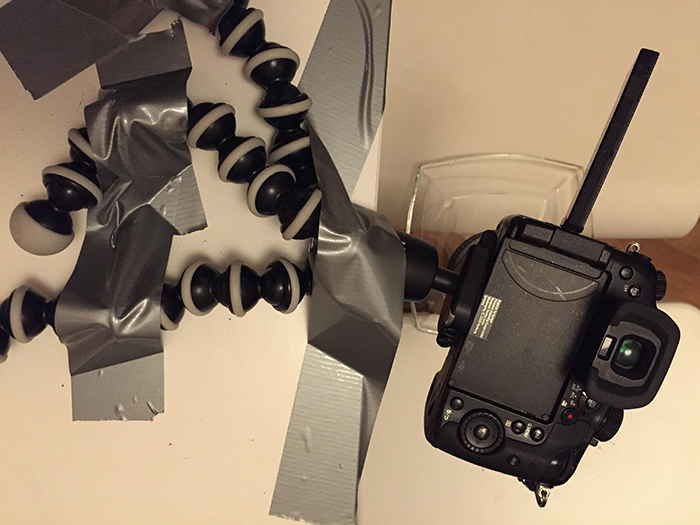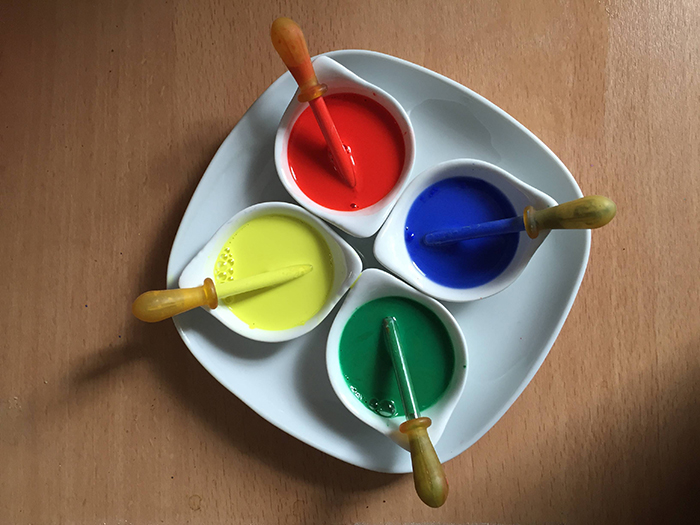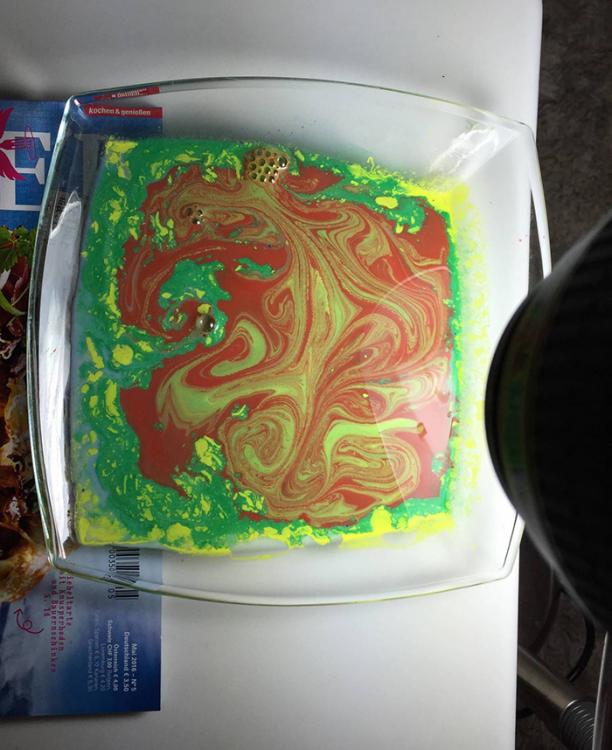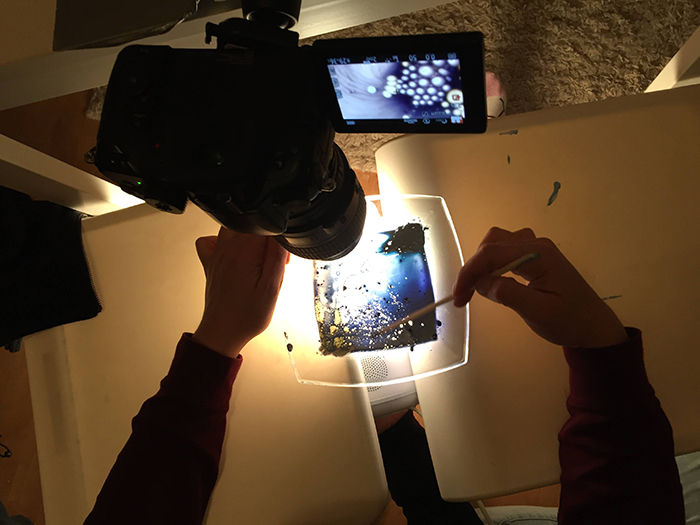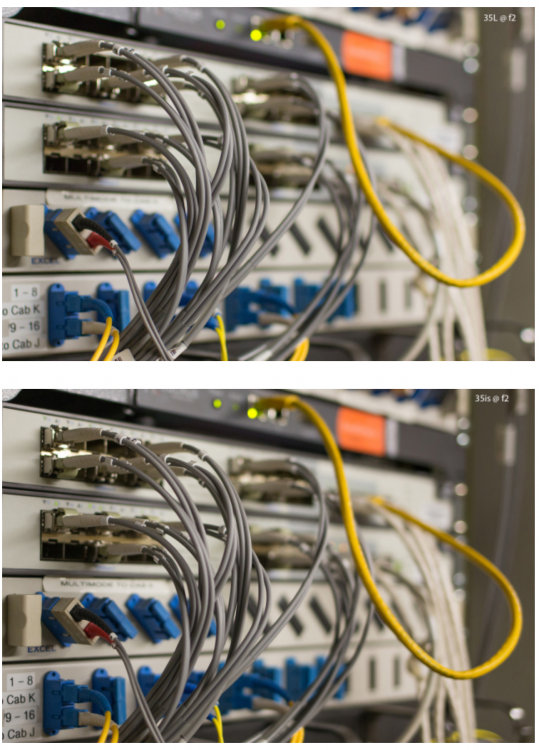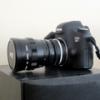Leaderboard
Popular Content
Showing content with the highest reputation on 06/18/2016 in all areas
-

Hasselblad mirrorless camera
IronFilm and 3 others reacted to Andrew Reid for a topic
Instead of reputation points, I am replacing the forum system with e-penis points from now on.4 points -

Video and excellent audio without having to sync in post
DevonChris and one other reacted to Michael Coffee for a topic
Yeah, the audio out of the zoom goes into the external recorder.. I'm saying to go from a zoom/preamps to the camera rather than sync later, for camera's with an input that is. It's not so quick if you're dealing with 100 clips or so:) Yeah, this is what I meant - perhaps I wasn't clear enough2 points -
Hasselblad mirrorless camera
richg101 and one other reacted to Mattias Burling for a topic
FF is not MF in the same way that a Smartphone isnt a Large Format. Your not gonna shoot a portrait of three people from head to toe at a six feet distance in a small room with a 105mm lens on a FF, no matter what the math say. Yes the DOF and exposure is the same no matter what the sensor size is. Adding crop factor to the aperture is BS. The difference is in usage. Can I get the DOF in combination with the perspective I want from the working distance that I want. Thats why MF and LF is "better" for portraits. You can get the whole person and the room from a short distance with the lovely perspective of a 105 or there about.2 points -

Hasselblad mirrorless camera
David Hung and one other reacted to Andrew Reid for a topic
@jcs The link to the 5DR vs Phase One test proves nothing. They have no depth to the scene they're shooting. It's just some girl sat in front of a wall If you want to see a proper test watch Kubrick's scene from 2001. I am amazed at the willingness of people to learn such important stuff from non-entities on YouTube. The guy spends 90% of it comparing resolution and is then surprised to find out two 50MP cameras resolve similar detail!!!! This is a typical full frame shot and shows nothing. The background is completely creamed out. The subject is punched in, with nothing around it but thin air. You can't show the full way in which a lens and sensor combination renders a scene from such a dull shot.2 points -
Hasselblad mirrorless camera
IronFilm and one other reacted to BrooklynDan for a topic
You got double the sensor real estate to cover compared to full frame. It's got to be an incredibly fast readout, or the image is gonna be mush. Especially with the shallow depth-of-field. Until recently, medium format cameras used CCDs. CMOS sensors are actually a recent development in this arena. Maybe going back to those would be a smart idea. Imagine the motion cadence! My dream would be a 645 sensor purpose-built for video with a lower pixel count. Maybe 6K or 8K spread out over a 60mm-wide sensor area. Bigger pixels = low-light monster. And then use the space between the pixels for the circuitry required for a global shutter.2 points -
give me a shout when you find a lens/sensor that will replicate my leaf afi-ii 10 and a 180mm/2.8 https://c2.staticflickr.com/8/7506/26997678725_133cd94b63_o.jpg2 points
-
NX500/NX1 have programmable hardware and in essence you set up the hardware which resized the input for the encoder. We found the registers, but working with them directly is problematic as soon as you update part of the registers stream gets out of sync and drops out (outerbeat gets the credit for that one). Modifying the encoder's resolution can't be effective at all by itself, as no matter how you change it's recording resolution the feeding video will be already downsized. This at least should be quite clear. You can change any resolution to any other (with NX-KS it was available even for the last firmware) as they in fact only shuffle the available resolution, so you don't set anything "real". When it comes to MJPEG, something similar will be much easier achievable by setting IPeriod: 1 (or 0?), thus forcing HEVC with I-frames only. This is something that I shared with the vasile more than a month ago, when there was still some illusion for cooperative work. ; ) My linux skills are far less advanced and takes me more time to figure some of the things, and this was not on my list. cheers2 points
-

A Universe of Colors
Ian Edward Weir reacted to allegra for a topic
Hi So I borrowed a 100mm macro lens from a friend and experimented with acrylic colors, milk, water, oil and soap.. Shot it with my GH4, held by my precious gorilla pod and lots of duct tape! I have now entered my video into a contest. If you like it, I would be really really happy, if you'd give it a vote and maybe even share https://apps.facebook.com/dvxvideocontest/?video=16 Thanks!1 point -
Just say no to the belts. You can get rings for $15-$20. Get one for every lens.1 point
-

Video and excellent audio without having to sync in post
DevonChris reacted to M Carter for a topic
I've often found my synch audio on Nikon bodies and the NX1 to be useable in the final edit. My chain is (insert really really nice hyper mic here - I use the AT4053) to a Tascam DR60d, which records the audio track and a safety track at minus-6 DB; camera-out to the camera's mic input. And then I really take care to dial in the gains staging - maximum safe gain on the Tascam, set the DSLR input at around 70-80%, and use the camera-out gain on the recorder to get a proper but strong level to the camera. It's not just compression (and there are two kinds of compression, audio limiting and compression of the digital file, such as MP3), it's minimum-circuit to do the job as far as preamps go; and cramming a tiny preamp into a mess of other circuitry isn't optimal. And throw in so-so 1/8" connectors and cables and an unbalanced signal path. But most camera's audio compression (limiting or auto-gain) is horrendous (but can usually be turned off). Digital compression is generally very good. As I said, if I'm very careful with my synch audio, I can sometimes use it in the edit, but this also depends on the camera. The NX1 can sound punchy and crisp with a good preamp and optimal levels (and a great mic). But once I'm rolling, I can't mess with anything but the input level on the recorder. As interview subjects get comfortable or you get to the meat of the story, they can get louder. So often it's the DR track, with sometimes bits of the safety track cut in. Synching is a non-issue these days, with FCPX or PluralEyes. And I can manually synch even long multi-cut interviews in a couple minutes, it's not really an issue for many projects. But if you don't want to buy a pro recorder, at least get a pro preamp. And probably the most full-featured value/budget preamp is the one in the DR60D, so you might as well just get a recorder (mine shipped with PluralEyes for free, too). I'm not crazy about the zooms that I've seen, but there may be good ones out there. DR60D's can be found really cheap used, too.1 point -
silly topic: I love my Canon FD 20mm, but I don´t want to test it...
Justin Bacle reacted to Mattias Burling for a topic
Just use it and let it get scratched up. A little patina never hurt no body.1 point -
point of focus is the text on the front of the lens. bokeh bubbles are the same for both shots meaning the ratio between the in focus and fully out of focus areas is the same. HOWEVER, on the aps-c shot the canon text on the camera body, the underside of the tripod head, and the text on the flash are are more blurred than the full frame image. so for a bigger sensor the dof rolloff is slower and therefore more of the camera is in focus. as distance increases and focal length is lengthened this attribute is magnified.1 point
-
Panasonic 12mm f1.4 announced
John Matthews reacted to ntblowz for a topic
1 point -

Shootout - Blackmagic Video Assist 4K vs Convergent Design Odyssey 7Q+
Zak Forsman reacted to Andrew Reid for a topic
Fog with LOG maybe 10bit is a good LOG recording bit depth. I still don't see much advantage to it on the GH4 though vs the 8bit.1 point -
Petition for Samsung NX1 hack
lucabutera reacted to vasile for a topic
this. Run out of slots to enable. Any NX500 beta testing volunteers please PM me.1 point -
Hasselblad mirrorless camera
TheRenaissanceMan reacted to Mattias Burling for a topic
Here is my example. Take a magazine cover, take a pair of scissors, cut out a crop of the cover. Did it get darker? Did the DOF change? Did the compression change? Or was is just a crop?1 point -
Video and excellent audio without having to sync in post
Michael Coffee reacted to DevonChris for a topic
I use an Atomos Ninja Star with my GX8 and the sound quality from the internal mic is actually quite good (but I still only use it for synching purposes). I think these cameras apply horrendous amounts of compresion to the audio, which is why the internally recorded audio is so bad. You can connect a zoom straight into the Ninja Star which gives excellent synched audio and video quality, at least with the GX8. Maybe this is the dream setup for your GX85 that you mentioned1 point -
Lenses
mercer reacted to Mattias Burling for a topic
Yes it included a Bolex, that I used the other day for my next D16 review No there is no need for IR Cut on the D16.1 point -

Hasselblad mirrorless camera
jcs reacted to fuzzynormal for a topic
Sure, but it's a technical medium. Nerds are needed. That's why cinema is such an inclusive craft/art form. Making movies needs a big tent. The technical and artistic.1 point -
its funny how the most technical people often have zero aesthetic sense ooo looks like i have 236 e-penis points ?1 point
-

Video and excellent audio without having to sync in post
Michael Coffee reacted to John Matthews for a topic
I really don't see the big deal in syncing... During the shoot, I would spend about the same amount of time setting up an external recorder versus a wired or wireless option. Throw the files on the computer. Ok... this takes the most time. Depending on the file size, it could take as long at 1 minute for a big 24-bit audio file. Syncing in FCPX: Select both files. Right-click and select: "Synchronize clips"... 15 seconds later... voilà... works like magic. In the timeline: Expand audio. Select audio from camera and press "v" to disable audio. Adjust your levels and you're done. 10 seconds. So, what we're really talking about is 2 minutes (maximum) of extra time, but you get a fantastic audio file and it costs much less. If your time is worth that much, I'll argue that you wouldn't have asked the question on this forum. If fact, the only "hard" part of this whole thing is keeping track of which audio file goes with which video file. The only real negative that I can think of to this method is during the recording. You can't adjust and monitor an external recorder (placed next to your subject on-set) if the sound becomes too loud... audio ruined. So care needs to taken when setting the levels.1 point -
If no one is willing to do some work and actually do a test comparing MF to FF in the real world with equivalent settings, then what's the point of debating without any comparative evidence? I'm a cognitive scientist, open-minded and willing to learn new things. That said, a valid scientific test, which is easy to do is all that's needed to make a useful point regarding MF vs. FF. If the only difference is MF lens design, that's cool, however this debate was MF vs. FF cameras (and again, Caldwell says no advantage for MF lenses anymore; no point in a MF => FF SpeedBooster). If an MF camera system (body + lens) is truly better than FF, I'd invest in MF. So far there's no comparative evidence showing this to be true (the only scientifically valid way to determine if there's a difference).1 point
-
If there's one that's the best when combining all 3, I think it's the GH4. Not the single best in any category, but solid in each. Fantastic doc camera. Fantastic travel camera. And while there is a better, it's still a fantastic film camera in the right hands, especially with a speedbooster and the right lenses.1 point
-
How about YET another "Guess the Camera?"
benymypony reacted to elgabogomez for a topic
Looks like ursa or blackmagic 4k 400 underexposed...1 point -

Hasselblad mirrorless camera
Nikkor reacted to Andrew Reid for a topic
As for full frame vs medium format... I can 9 times out of 10 tell the difference. The lenses and larger sensor have the following advantages: - 45mm is wide, yet close to the subject, perfect rendering of a human face, perfect focus fall off from the eyes to the ears, it's beautiful. You can't test it by shooting a 5D on a stick like JCS - 45mm will have lower distortion than 28mm - The longer lenses for medium format portrait shooting, i.e. 80mm, gives extremely gentle focus roll off - it isn't about a more shallow DOF - it is about the all-round rendering of depth. You see it in both the clips from 2001, and The Master that Nikkor posted previously in this thread. Hard to put my finger on it, but I notice it. Every aspect of the lens is Gradual and smooth... the bokeh, the vignette, the focus, the micro-contrast, the resolving power, it is all buttery. - A large sensor can increase resolution whilst maintaining very large pixels with a wider dynamic range and lower noise than a full frame sensor - There are some lovely medium format lenses - punching through the centre-only of these on a full frame camera won't give the same look - Yes sure there are a lot of nice full frame lenses too and their apertures are faster, but like I said above, it isn't all about shallow DOF, more about the overall image.1 point -
Winning arguments is a waste of time unless prosecuting a lawsuit. Learning new things and helping others is time better spent. MF vs. FF can be tested with the same camera and lens (changing lens settings and post cropping), which will typically show that the sensor size isn't where any effect is coming from. Now the point shifts to lenses- cool, that could be helpful to understand for those thinking about getting an MF body to take advantage of lenses. However Brian Caldwell stated that the current top 35mm lenses are as good or better than MF lenses. Posting equivalence-matched MF-cameras+lenses to FF could be helpful in showing the strengths of the MF lenses vs. FF lenses. Even more useful would be showing the MF lenses can more cost effectively produce images than very expensive FF lenses (Otus etc.). This same argument is valid when comparing FF to m43: FF lenses are effectively cheaper to get super shallow DOF.1 point
-

Hasselblad mirrorless camera
Nikkor reacted to fuzzynormal for a topic
But nobody wins internet arguments. Thus, there is a failure to acquire e-penis points. I am now sad.1 point -
1 point
-

Hasselblad mirrorless camera
Michal Gajdoš reacted to Andrew Reid for a topic
Agree on your medium format image observations, the look is truly special and different to full frame. The 4K from 50MP isn't impossible. Remember the A7R II for $3k does pixel binned 4K from 42MP. And it actually looks pretty ok, with less rolling shutter than the native 4K Super 35mm crop.1 point -
I took the Full Frame Look (vs. S35) challenge and created images that were equivalent: http://brightland.com/w/the-full-frame-look-is-a-myth-heres-how-to-prove-it-for-yourself/ . Some folks posted 'debunking' shots with MF vs. FF but didn't use equivalent camera settings per the math (and not even the same framing). The math and physics also apply to MF vs FF. If it's possible to match via the equivalence equations an MF camera + lens to a FF camera + lens, the images will be identical. However, part of the difference is the sensor technology and software processing, where Phase One appears to really shine. Thus comparing a Canon 1DX II or Nikon D5 to a Phase One (any recent) may still show the Phase One providing a better image. If that wasn't the case, there wouldn't be a market for these very expensive MF cameras.1 point
-
Whaa??? That can't be true, this has been debunked, you have to fix your eyes.1 point
-
Hasselblad mirrorless camera
kaylee reacted to BrooklynDan for a topic
I've been handling and playing around with medium format Hasselblad and Phase One cameras at my job, and let me just say, the look is something special. It's not just the depth of field. You can get similar results with fast lenses on full frame. Medium format glass tends to be slower. 2.8 or 4 max. But the visual prespective of 645 is unique. The 50mm is a wide angle. You get amazing separation between foreground and background. It's a rich, layered look that you just can't get on a smaller format. I can't wait until medium format video becomes a thing, but it's gonna be a tough road to get there. The cameras are staggeringly expensive ($40K and up), and getting clean, jello-free 4K from the entire 50mp+ sensors will be a technical nightmare.1 point -

Panasonic 12mm f1.4 announced
JurijTurnsek reacted to Shield3 for a topic
Wait, what? A 12mm F/1.4 with a sensor with a crop factor of 2 is the same as a 24mm 2.8 on a full frame. Period. You can't multiply the "effective 35mm focal length" without multiplying by the crop factor. It *is* just that simple. While lenses have different looks, the basic principles remain true - 2x 12mm @ 1.4 = 1x 24mm @ 2.8. How is it "not right to go around multiplying apertures by crop factor? Just because this is your forum doesn't mean you can suddenly change the laws of physics. The hole *isn't* as big as the micro four thirds lens doesn't have a 24x36 sensor to cover! The light INTENSITY is the same, but the light GATHERING is not. Big difference here. Next time it rains, put a small bucket outside next to one 2x the size. Which one gathers more rain? Oh, right. The larger one. This should help you out Andrew.1 point -
Panasonic 12mm f1.4 announced
Michael Coffee reacted to The Chris for a topic
Ford makes a Ferrari, the new $400,000 GT, and its absolutely amazing. Almost 7,000 have applied to buy one of the 500 being produced. https://www.ford.com/performance/gt/ Panny's pricing is going to bite them in the rear. This looks like a fantastic lens, but they aren't going to sell many, especially when the 12/2 is half the cost.1 point -

Anybody compared an NX1 w/ 18-200 to XC10, RX10, FZ1000?
SMGJohn reacted to Andrew Reid for a topic
I prefer the NX1 with the 16-50mm F2-2.8 Not tried the 18-200 but these zooms for APS-C are usually pretty soft 4K needs a good lens. The XC10 would be better in low light, it can do pretty respectable 6400 whereas the NX1 is very noisy indeed at that level RX10 II 4K is pretty soft, I don't rate it. RX10 III much better FZ1000 is a very decent bargain super zoom, this is cheapest way to get a 24-400mm. 28-200mm is the 18-200 on NX11 point -

Shootout - Blackmagic Video Assist 4K vs Convergent Design Odyssey 7Q+
Paul Nelson reacted to maxmizer for a topic
I decided to buy Atomos flame, because more than a lot of options into, it also has the suitcase, and a battery system that I already had. In my opinion the price of quality is in favor of Atomos1 point -
I believe the same rear dial push to toggle magnification between PIP and full screen works for any lens when you are in MF mode. The only difference is that with native Micro Four Thirds AF lenses, you activate the magnification feature by turning the focus ring on the lens (assuming that you have the Menu properly set for AF+MF) and then once the magnified view is active, pushing the rear dial toggles between the PIP and full screen views. You use the same shutter half press maneuver to leave magnified view. I've only had my GX85 for a few days, but I'm quickly growing to love it. Yes, my dearly departed EM5 II was a sexier piece of of gear and had the feel in hand to match the good looks. But I personally find the form and function of the Panasonic cameras to be superior from an ergonomic standpoint. Yes, the GX85 grip is a slight step back from the GX7, but it is completely fine and comfortable. The EVF is not cutting edge, but again it is completely fine and comfortable (and yes, I do perceive of the rainbow tearing effect and it doesn't really bother me). But overall, the speed and ease with which I can adjust my focus point, my magnified view, the lens FOV setting for the IBIS, etc. are all far superior to my old Olympus. Thanks to everyone on the forum for sharing your feedback on the GX85. It helped convince me that it was a good move to replace my EM5 II with the GX85 for its run/gun stills/video capabilities. I found a great condition, sub 400 shutter count EM5 Mark I to have my OMD fix (same stills quality for a fraction of the cost).1 point
-
Panasonic 12mm f1.4 announced
John Matthews reacted to Inazuma for a topic
The most comparable lens is the fujifilm 16mm f1.4 wr. Like the Panasonic it is 24mm equivalent, weather sealed, has a f1.4 aperture and is a 5/5 rated lens with excellent sharpness and rendition. But this lens is $699. Do you really still think the $1299 price on this is justifiable?1 point -
For the price it appears Aputure FineHD VS-2 wins. That combo of low price and high resolution is a killer combo. But consider also spending a little more and getting a BMD Video Assist instead.1 point
-
FS100 lacking NDs is a little annoying for me personally. Trying to avoid that. Image is nice though. Another reason I'm looking into the AF100 is because I'm invested in M43 a little bit. C100 doesn't have slo mo options which is something I need, and F3 + lenses would be a little out of budget. Plus media. Just gauging to see what people use. Thanks for the input!1 point
-
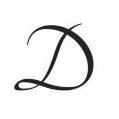
Sony Mirrorless reliability...
Mattias Burling reacted to Davey for a topic
Wouldn't trust my a7s2 as far as I could throw it.1 point -

Panasonic 12mm f1.4 announced
jonpais reacted to Andrew Reid for a topic
Much much more difficult and much more advanced, and F1.4 will give a completely different look & feel to an F2.8 on full frame, plus it's 2 stops brighter. It's not right to go around multiplying apertures by crop factor. An F1.4 on Micro Four Thirds is as a big a hole as an F1.4 on full frame. If this lens is as stunning as the Leica 42.5mm F1.2, I will be buying one. Plus... it IS a Leica you know!? It isn't a Zeiss. It's not a Panasonic. It's not a Canon. Leica designed optics cost a lot of money for a reason. No you can't dude. First of all an image is a combination of camera and lens. Tell me about that full frame sensor camera that shoots 4K for less than $1200. It doesn't exist yet. Then add the cost of the 24mm for full frame. Forget about that mythical full frame 24mm F2.8 you seem to be in awe of... the premium, sharp, low distortion optics are the Zeiss Batis 25mm F2, the Sigma 20mm F1.4 and if you can forgive the lesser sharpness and more distortion, the Canon 24mm F1.4 - all of those push you quite far past 'affordable' when paired with even the cheapest GH4-standard full frame 4K video mirrorless body or DSLR, namely the A7S II or 1D C. The GH5 paired with just two lenses, the Leica 42.5 F1.2 and Leica 12 F1.4 will have astounding image quality, likely bettering the A7S II or A7R II with the Batis 25 and 85 for FAR less money. Nobody complains about the Batis 25mm F2.0 price being $1200-ish and that is the nearest modern competitor to the Leica 12mm F1.4 in terms of image quality and modern build standards & AF. All I ever hear is full frame this, full frame that, it's like people are blinded by the pure simplification of all the arguments regarding image quality down to one spec. Not to mention the fact that if the GH5 has the GX85's in-body 5 axis IBIS, it will be stronger than a full frame camera in that respect too... And if it is Super 35mm you want, put a Speed Booster on it. You could say that for $999 you can get an A6300 but the rolling shutter and overheating really kills it compared to what the impending GH5 will likely be capable of in terms of reliability and rolling shutter less than half of what kind of skew the A6300 produces. Then add to that $999 the cost of a 16mm F1.4 E-mount lens... oh there isn't one... ok the cost of a Speed Booster and full frame Canon 24mm F1.4L, and already you are past the $2000 point... Easily. And that is why Bro... You don't knock this Leica 12.1 point



